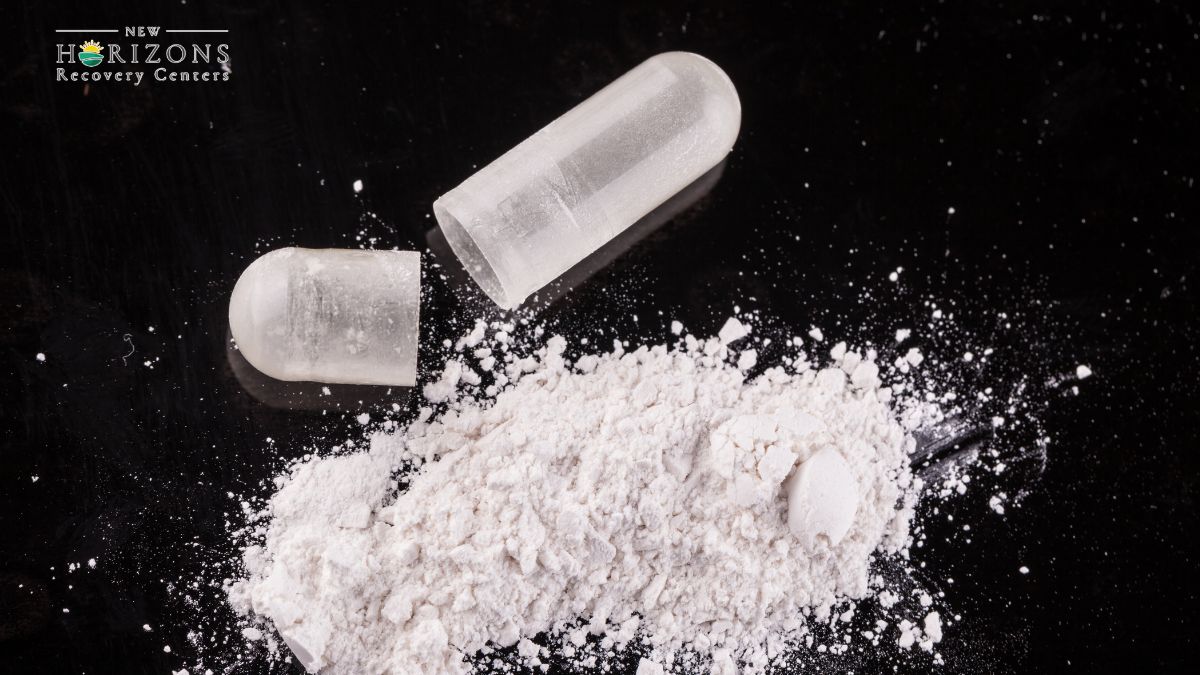Understanding Teen Driving Risks
Teenagers face unique risks when it comes to driving, and understanding these risks is vital for promoting their safety on the roads. This section explores alarming statistics on teen driving and highlights the leading cause of teen deaths.

Alarming Statistics on Teen Driving
The statistics surrounding teen driving are indeed alarming. In 2021, a concerning 27% of young drivers aged 15 to 20 involved in fatal crashes had blood alcohol concentrations (BACs) of .01 g/dL or higher. Even more worrying is that 22% of these young drivers had BACs of .08 g/dL or higher, which is the legal limit for adults in most states.
Motor vehicle crashes continue to be the leading cause of death among teenagers, making it essential to address the risks associated with teen driving. The statistics for motor vehicle crashes and impairment-related crashes among young drivers are alarming. These numbers highlight the urgent need for awareness, prevention, and education to ensure the safety of teenage drivers and those sharing the road with them.
Leading Cause of Teen Deaths
Motor vehicle crashes remain the leading cause of death for teenagers in the United States. Drivers aged 15 to 20 are particularly vulnerable, with higher crash rates compared to older drivers. Various risk factors contribute to these alarming statistics, including drinking and driving, as well as failure to use seat belts.
It is crucial to recognize that impaired driving plays a significant role in the high fatality rate among teenagers. When a teenage driver aged 16 to 20 has a blood alcohol concentration (BAC) of .08% or more, they become 32 times more likely to die in a car accident than if they were driving sober [4]. These staggering statistics underscore the importance of effective prevention strategies and education to address the risks associated with underage drinking and impaired driving.
By understanding the alarming statistics surrounding teen driving and recognizing that motor vehicle crashes are the leading cause of death among teenagers, we can work towards implementing effective measures to promote safe driving habits among young drivers. It is essential to prioritize education, awareness, and interventions that address the specific risks faced by teenage drivers to ensure their well-being on the road.
Impaired Driving Among Teens
Impaired driving among teens is a grave concern, with a significant number of young drivers engaging in driving under the influence of alcohol or drugs. Understanding the blood alcohol concentrations in young drivers and the risk factors associated with teenage driving is essential for addressing this alarming issue.
Blood Alcohol Concentrations in Young Drivers
The statistics regarding blood alcohol concentrations (BACs) among young drivers are concerning. In 2021, 27% of young drivers (ages 15-20) involved in fatal crashes had BACs of .01 g/dL or higher, with 22% of those young drivers having BACs of .08 g/dL or higher. It's crucial to note that even a small amount of alcohol can impair a driver's judgment and reaction time, increasing the risk of accidents.
Risk Factors for Teenage Drivers
Teenage drivers face various risk factors that contribute to impaired driving incidents. In particular, drinking and driving is a significant concern among young drivers. If a teenage driver aged 16–20 has a BAC of .08% or more, they are 32 times more likely to die in a car accident than if they were driving sober [4]. Shockingly, one in 10 high schoolers drinks and drives, and as a whole, American teens drink and drive 2.4 million times every month [4]. These statistics emphasize the urgent need for targeted interventions and prevention strategies to address this risky behavior.
It is essential to educate teenage drivers about the dangers of impaired driving and the potential consequences they may face. By raising awareness about the risks associated with driving under the influence of alcohol or drugs, we can work towards reducing the prevalence of impaired driving among teens and promoting safer roadways for everyone.
Impact of Drinking and Driving
The impact of drinking and driving, especially among teenagers, is a serious concern that poses significant risks to both the individuals involved and the community at large. Understanding the consequences of underage DUI (driving under the influence) and the dangers of impaired driving is crucial in addressing this issue effectively.
Consequences of Underage DUI
Driving under the influence of alcohol or drugs can have severe legal and personal consequences, particularly for underage drivers. In 2021, alarming statistics revealed that 27% of young drivers (ages 15-20) involved in fatal crashes had blood alcohol concentrations (BACs) of .01 g/dL or higher, while 22% had BACs of .08 g/dL or higher.
If a teenage driver aged 16–20 has a BAC of .08% or more, they are 32 times more likely to die in a car accident than if they were driving sober [4]. Furthermore, the legal consequences of underage DUI can include fines, license suspension, mandatory alcohol education programs, community service, and even imprisonment. These penalties vary depending on the jurisdiction and the severity of the offense.
Dangers of Impaired Driving
Impaired driving, whether due to alcohol or drug use, significantly increases the risk of accidents, injuries, and fatalities. The effects of alcohol and drugs impair judgment, coordination, reaction time, and perception, making it extremely dangerous to operate a vehicle.
According to research, one in 10 high schoolers admits to drinking and driving, and as a whole, American teens drink and drive approximately 2.4 million times every month [4]. These alarming numbers highlight the urgent need for effective prevention and education programs to address this issue.
Driving under the influence not only endangers the life of the impaired driver but also poses a risk to passengers, pedestrians, and other drivers on the road. It is essential for teenagers and all individuals to understand the potential consequences and dangers associated with impaired driving.
By raising awareness about the legal ramifications, personal risks, and potential harm caused by underage DUI and impaired driving, it is possible to make a significant impact in reducing these incidents and promoting safer roads for everyone. Education, strict enforcement, and community support are key in addressing this issue and ensuring the safety and well-being of young drivers and the public as a whole.
Strategies for Prevention
To combat the alarming number of teens driving under the influence of alcohol or drugs, various strategies have been implemented to raise awareness, enforce laws, and deter impaired driving. Two prominent strategies for prevention include MADD's Campaign to Eliminate Drunk Driving and the use of sobriety checkpoints and enforcement.
MADD's Campaign to Eliminate Drunk Driving
MADD (Mothers Against Drunk Driving) has been at the forefront of efforts to eliminate drunk driving and underage drinking. Their campaign focuses on education, advocacy, and law enforcement to create a safer environment on the roads. By working closely with communities, legislators, and law enforcement agencies, MADD aims to reduce the incidence of impaired driving among teenagers.
As part of their campaign, MADD organizes events and initiatives to raise awareness about the dangers of drunk driving. One such initiative is Saturation Saturday, which occurs on the Saturday before Labor Day weekend. During this day, MADD teams up with law enforcement departments nationwide to amplify the message that driving impaired will result in consequences [5]. By increasing law enforcement presence and publicizing their efforts, MADD seeks to deter individuals from getting behind the wheel while under the influence.
Sobriety Checkpoints and Enforcement
Sobriety checkpoints, also known as DUI checkpoints, are an important component of MADD's Campaign to Eliminate Drunk Driving. These checkpoints involve law enforcement officers stopping vehicles at specific locations to screen drivers for signs of impairment. Sobriety checkpoints are typically set up in locations and at times when impaired driving is more likely to occur.
The purpose of sobriety checkpoints is to identify and apprehend drivers who are under the influence of alcohol or drugs. These checkpoints serve as a deterrent, signaling to the community that law enforcement is actively enforcing impaired driving laws. According to MADD, sobriety checkpoints with high-visibility traffic safety enforcement have been shown to reduce drunk driving fatalities by approximately 20 percent.
By implementing sobriety checkpoints and enforcing impaired driving laws, law enforcement agencies aim to discourage individuals, especially teenagers, from driving while impaired. The presence of checkpoints serves as a reminder of the legal and safety consequences associated with driving under the influence, and helps to create a safer environment on the roads.
Efforts like MADD's Campaign to Eliminate Drunk Driving and the use of sobriety checkpoints and enforcement are critical in raising awareness, deterring impaired driving, and ultimately reducing the number of teens driving under the influence of alcohol or drugs. By combining education, advocacy, and enforcement, these strategies work towards creating a safer future for all road users.
Addressing Risky Behaviors
To ensure the safety of teen drivers on the road, it is crucial to address and mitigate risky behaviors that contribute to accidents and fatalities. Two significant concerns in this regard are speeding among teen drivers and the dangers of drowsy driving.
Speeding Among Teen Drivers
Speeding poses a serious risk for teen drivers and is a factor in a significant number of fatal crashes involving young drivers. According to the National Highway Traffic Safety Administration (NHTSA), in 2022, speeding was a factor in 30% of passenger vehicle crashes involving teen drivers aged 15 to 18 NHTSA. A study conducted by the Governors Highway Safety Association (GHSA) revealed that from 2000 to 2011, teens were involved in 19,447 speeding-related crashes NHTSA.
The consequences of speeding can be devastating. Excessive speed reduces the driver's ability to react to unexpected situations, increases the distance required to stop a vehicle, and amplifies the severity of collisions. Young drivers need to understand the potential consequences of speeding and the importance of obeying posted speed limits.
Drowsy Driving and Its Dangers
Drowsy driving is another risky behavior that affects drivers of all age groups, including teens. Fatigue impairs judgment, slows reaction times, and decreases attention on the road. Unfortunately, young drivers are particularly susceptible to drowsy driving due to irregular sleep patterns and demanding schedules.
The National Highway Traffic Safety Administration (NHTSA) highlights the dangers of drowsy driving among teenagers. Fatigue-related crashes can often be severe, as young drivers may not have the experience or awareness to recognize the signs of drowsiness and take appropriate action to prevent accidents.
To combat drowsy driving, it is essential for teens to prioritize getting enough sleep and recognize when they are too tired to drive safely. If feeling drowsy while behind the wheel, it is crucial to pull over in a safe location and rest before continuing the journey. Encouraging open conversations about the dangers of drowsy driving and promoting healthy sleep habits can help reduce the incidence of this risky behavior among teens.
Addressing risky behaviors such as speeding and drowsy driving requires a multi-faceted approach involving education, awareness campaigns, and enforcement of traffic laws. By providing young drivers with the necessary knowledge and resources, we can work towards creating a safer environment on the roads for teen drivers and reducing the number of accidents and fatalities associated with these behaviors.
Initiatives for Teen Safety
To address the concerning issue of teens driving under the influence of alcohol or drugs, various initiatives have been developed to promote teen safety and reduce the occurrence of impaired driving. Two important initiatives in this regard are the Reduce Teen Crashes Program and the Youth Risk Behavior Surveillance Survey.
Reduce Teen Crashes Program
The Reduce Teen Crashes Program is an initiative aimed at educating and empowering young drivers to make safe choices on the road. This program, established by organizations like AAA, focuses on providing comprehensive resources and educational materials to both teens and their parents. The program covers various aspects of safe driving, including the dangers of impaired driving.
By engaging teens through interactive activities, workshops, and simulated driving experiences, the Reduce Teen Crashes Program seeks to instill responsible driving behaviors and raise awareness about the risks associated with driving under the influence. Through partnerships with schools, community organizations, and law enforcement agencies, this program strives to make a positive impact on teen driving safety.
Youth Risk Behavior Surveillance Survey
The Youth Risk Behavior Surveillance Survey is a valuable tool for collecting data on risky behaviors among teenagers, including impaired driving. This survey, conducted by the Centers for Disease Control and Prevention (CDC), provides insights into the prevalence of various risk factors and behaviors among high school students.
By administering this survey, researchers and policymakers can gain a better understanding of the scope and magnitude of impaired driving among teens. The data collected helps inform the development of evidence-based strategies and interventions to address this issue effectively. It also aids in monitoring trends over time and evaluating the impact of prevention efforts.
The survey covers a wide range of risk behaviors, including alcohol and drug use, seat belt usage, and distracted driving. By identifying patterns and trends in these behaviors, stakeholders can tailor interventions to target specific areas of concern and promote safer driving habits among teenagers.
These initiatives, along with other educational campaigns and enforcement efforts, play a crucial role in combating the problem of teens driving under the influence. By combining education, awareness, and data-driven strategies, we can work towards reducing the number of incidents and ensuring the safety of young drivers on the road.





-ink.jpeg)
-ink.jpeg)
